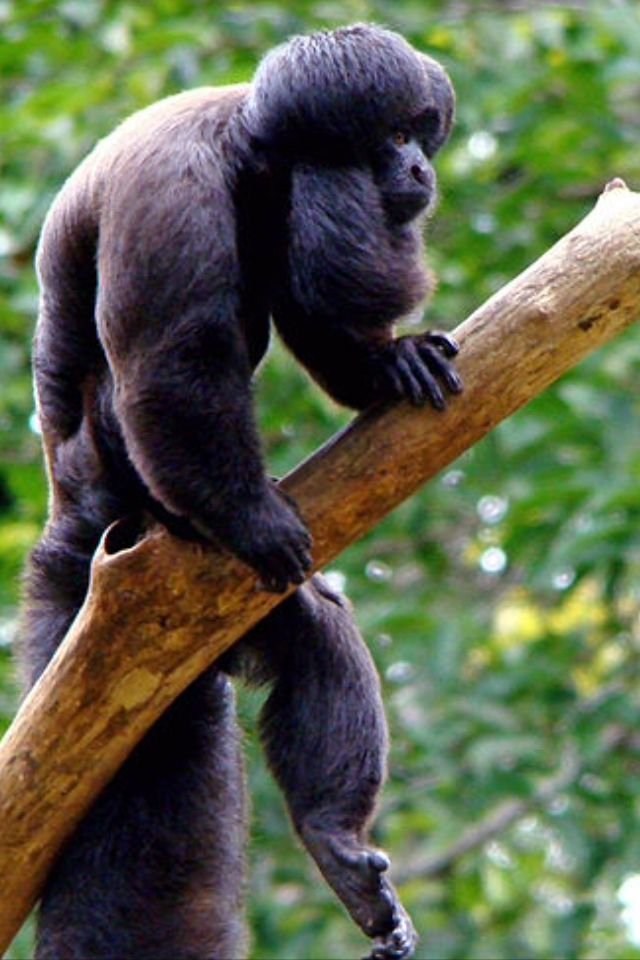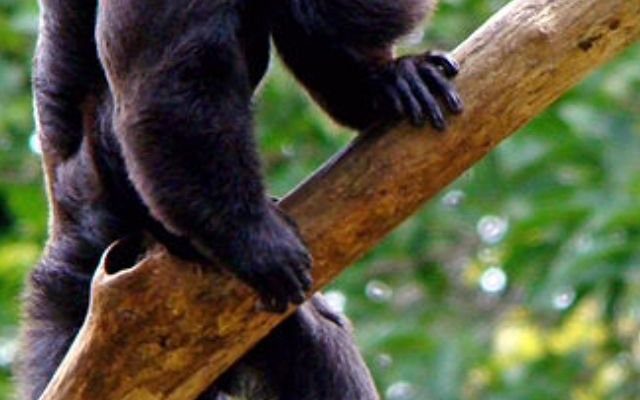
If you’re curious about which animals resemble the Saki monkey and how to spot the differences, you’re in for a treat. Just like how you might find different types of apples at the market, each animal has its own unique characteristics. Let’s dive into the world of these fascinating creatures and learn how to tell them apart, one monkey at a time.
1. Capuchin Monkeys
Capuchin monkeys are often seen in movies, stealing the show with their cheeky antics. They have a distinctive appearance with their dark faces and light-colored bodies, quite different from the Saki’s fluffy coat. While both types of monkeys are intelligent, Capuchins are known for their problem-solving skills and tool use—like using sticks to get ants or termites out of their nests.
In terms of behavior, Capuchins are social beings that live in larger groups. The Saki monkey, on the other hand, often prefers a more solitary lifestyle or small family units. If you see a bunch of little rascals swinging through the trees and chattering away, chances are you’re looking at Capuchins, not Sakis.
2. Howler Monkeys
Turn up the volume, because howler monkeys are known for their incredible vocalizations. Their signature howls can be heard miles away, echoing through the rainforest. Physically, they differ from Saki monkeys thanks to their long tails and dark fur. They also have a unique throat sac that helps amplify their sounds.
While the Saki monkey is more of an acrobat, leaping between branches, howler monkeys tend to hang out more in the treetops, munching on leaves. If you hear a deep, guttural sound and spot a monkey lounging with its tail wrapped around a branch, you’re likely dealing with a howler.
3. Tamarin Monkeys
Tamarins are pint-sized monkeys with adorable looks and playful behavior. Their fur can be fiery orange, black, or even white, making them a vibrant addition to the animal kingdom. Unlike the Saki monkey, which has a more robust body, tamarins are slender and have a more delicate frame.
These little guys tend to live in family groups and are often seen grooming one another, which highlights their strong social bonds. You might be wondering how to tell them apart—look for their smaller size and brighter colors. If you see a small monkey playing in the trees, it’s probably a tamarin.
4. Marmosets
Marmosets are another adorable species that you might find inhabiting the same regions as Saki monkeys. They’re known for their small size, fluffy fur, and expressive faces. Marmosets are typically more active during the day and can often be seen foraging for insects or fruits.
In contrast to the Saki, which is larger and more robust, marmosets are tiny, weighing only about a pound or two. If you see a monkey that looks like a tiny puffball with big eyes, chances are it’s a marmoset.
5. Spider Monkeys
Spider monkeys get their name from their long limbs, which allow for incredible agility and swinging ability. They have a distinctive, long tail that’s often prehensile, meaning they can use it to grab onto branches, similar to a fifth limb. This sets them apart from the Saki monkey, which has a more compact body and is less reliant on suspension from trees.
Spider monkeys are social animals, often seen in large troops, chattering and playing. If you spot a monkey seemingly doing a gymnastics routine in the trees, it’s likely a spider monkey showing off its skills.
6. Owl Monkeys
Owl monkeys are the only nocturnal monkeys in the New World, making them quite unique. Their large eyes make them look almost like little owls, which is a fun contrast to the playful and lively nature of the Saki monkey. While Saki monkeys are diurnal (active during the day), owl monkeys prefer the night, foraging for fruits and insects in the dark.
The primary difference is their appearance—Owl monkeys have a more rounded face and larger eyes than Sakis. If you see a monkey peering curiously from a tree branch at dusk, it just might be an owl monkey.
7. Tarsiers
Now, here’s where things get interesting. Tarsiers are not monkeys but are often compared to them because of their primate classification. These small creatures have huge eyes and can turn their heads almost 180 degrees, giving them an otherworldly appearance. Unlike the Saki monkey, tarsiers are insectivorous and rely heavily on their night vision.
While Sakis are known for their robust body type and fruit diet, tarsiers are slender and agile, making them excellent hunters of tiny creatures. If you see a tiny primate with giant eyes lurking in the shadows, it’s likely a tarsier getting ready for its nightly hunt.
8. Squirrel Monkeys
Squirrel monkeys are lively and active little creatures often found in Central and South America. They have a playful demeanor similar to that of the Saki monkey but are smaller and have a more slender build. Their fur tends to be a mixture of yellow and black, making them bright and easy to spot.
Unlike the more solitary Saki, squirrel monkeys are highly social, living in large groups and engaging in constant play. If you hear a lot of chattering and see a bunch of small monkeys scampering about, those are most likely squirrel monkeys rather than Sakis.
9. Guenons
Guenons are a diverse group of monkeys found in Africa. They come in various colors and sizes, but one thing they share is their expressive faces and vibrant fur. When comparing them to the Saki monkey, guenons typically have longer, leaner bodies and are known for their agility.
They are also very social creatures, often seen in large groups, which can make them quite boisterous. If you encounter a monkey that seems to enjoy showing off its colors and agility, you’re likely looking at a guenon.
10. Colobus Monkeys
Colobus monkeys are known for their striking appearance, with long, silky fur and a characteristic lack of thumbs, which sets them apart from many other monkeys, including the Saki. They have a more arboreal lifestyle and are excellent climbers, much like the Saki, but exhibit more black and white color patterns.
These monkeys primarily eat leaves, and their social structure is similar; they live in small groups and can often be seen supporting each other while navigating the treetops. If you spot a monkey with distinct black and white markings and a graceful style of movement, it’s likely a colobus monkey.
In summary, while the Saki monkey is a delightful and distinctive animal, many creatures share its jungle home, each with their own unique traits. Whether it’s the playful Capuchin or the silent Owl monkey, these animals all contribute to the rich tapestry of life in the wild. So next time you’re enjoying a nature documentary or visiting a zoo, keep an eye out for these fascinating relatives of the Saki monkey and see how they stack up!

